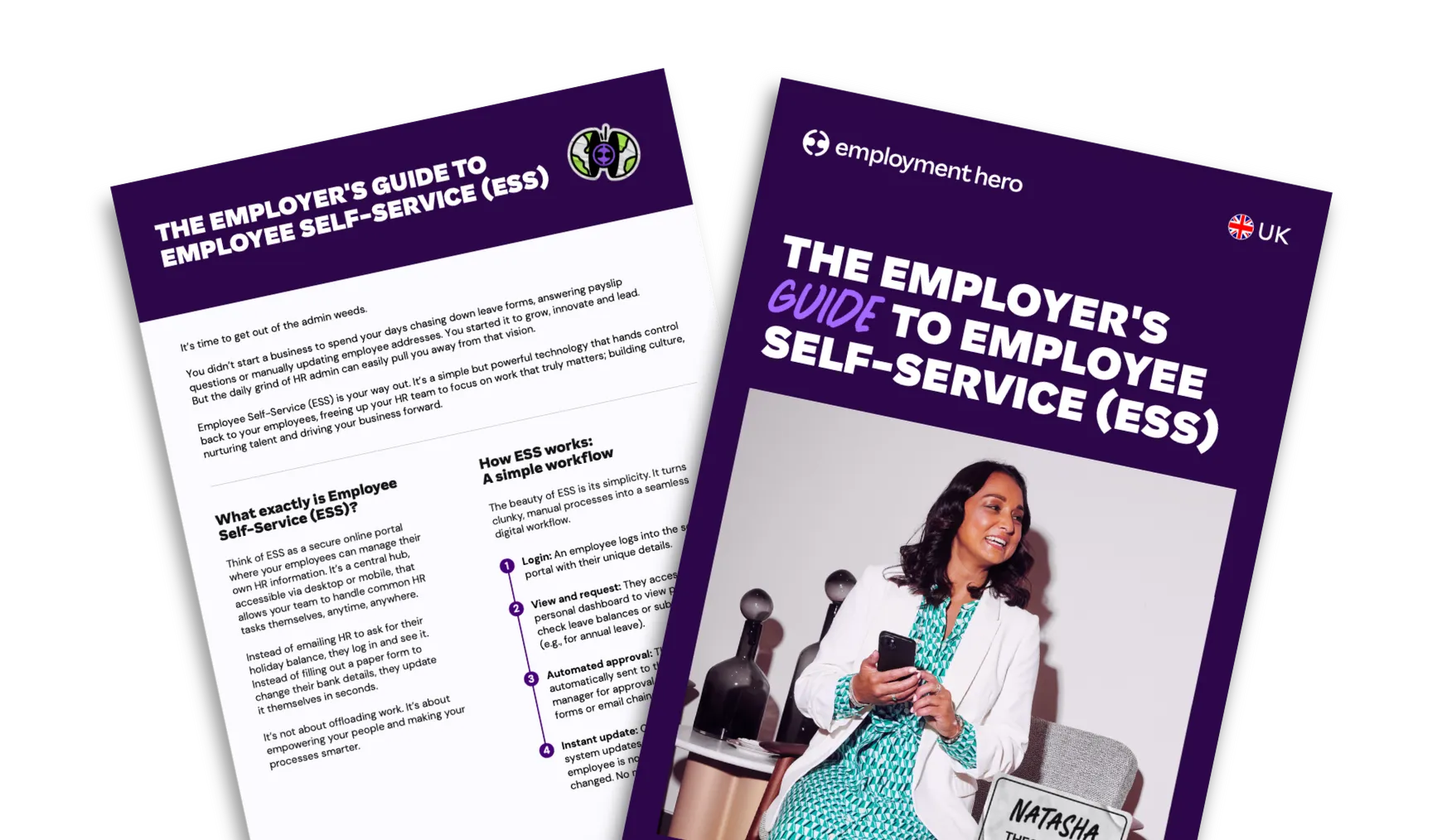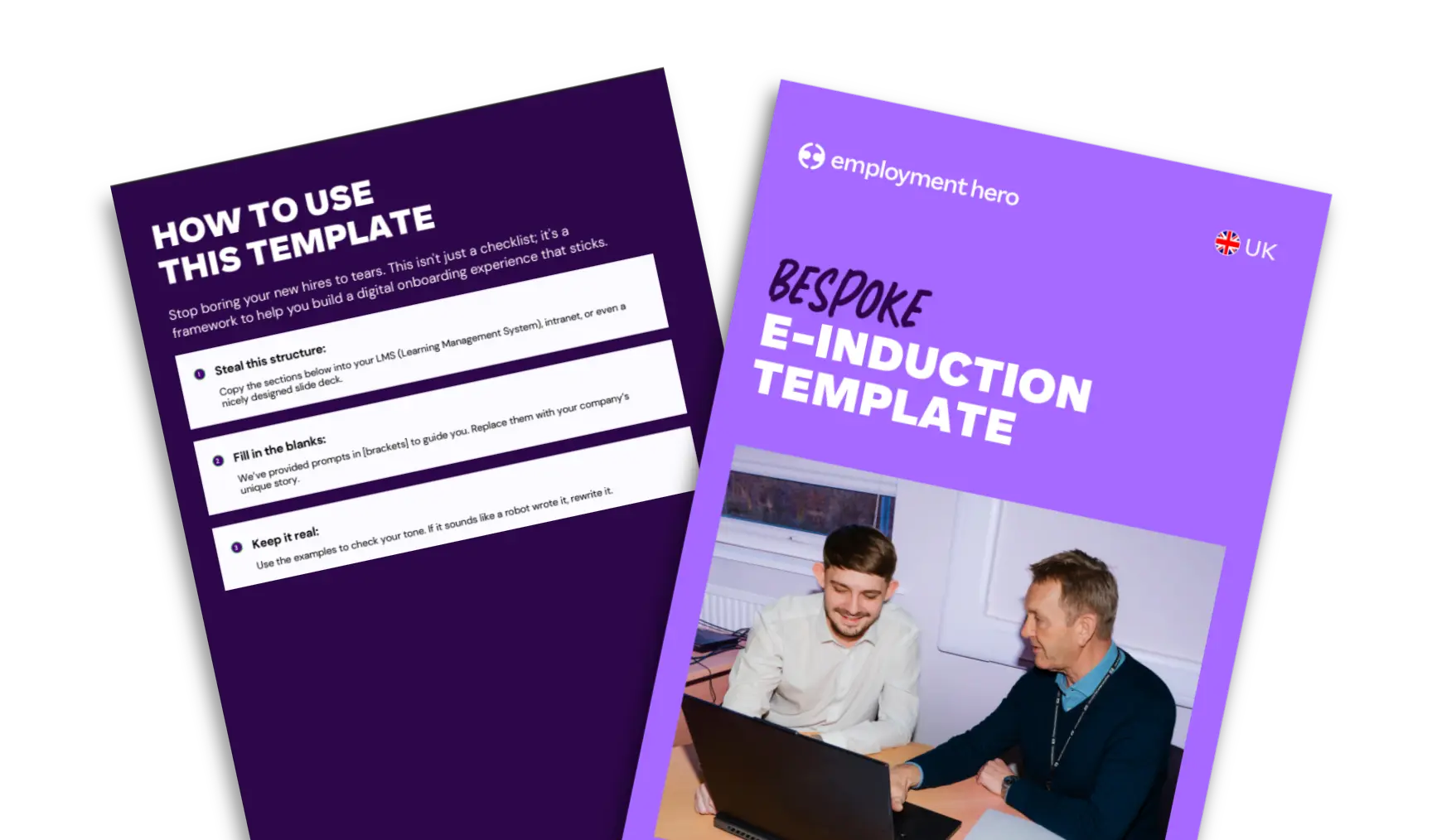Childcare vouchers: A guide for UK employers
Published
Childcare vouchers: A guide for UK employers
Published
Childcare costs are a major consideration for working parents and for years, childcare vouchers were a popular way for employers to provide support. Although the scheme closed to new entrants in 2018, many employers still manage it for long-standing team members. If you’re one of them, you know that navigating the rules of this legacy benefit can feel complex.
This guide will break down everything you need to know about managing your workplace childcare vouchers scheme, from how it works to your ongoing obligations. We’ll help you manage the scheme confidently and support your employees effectively.
What are childcare vouchers?

Childcare vouchers are a benefit that was offered by employers to help their staff pay for approved childcare. The scheme was run as a salary sacrifice arrangement, meaning employees agreed to receive a lower salary in exchange for the non-cash benefit of vouchers. This arrangement provided tax and National Insurance contributions (NICs) savings for both the employee and the employer.
The key thing to remember is that this is a legacy scheme. It was closed to new applicants on the 4th of October 2018 and was replaced by the government’s Tax-Free Childcare scheme. Employees who were already enrolled in a voucher scheme on or before that date can continue to receive them as long as they stay with the same employer and meet the eligibility criteria.
Understanding these fundamentals is crucial for managing the scheme correctly. Now, let’s look at the mechanics of how it operates through your payroll.
How do childcare vouchers work?
At its core, the scheme works by deducting the value of the childcare vouchers from an employee’s gross salary before tax and NICs are calculated. This is what generates the savings. The employee then receives the vouchers to pay their registered childcare provider.
Here’s a breakdown of the process:
- Salary sacrifice: The employee agrees to a revised employment contract, sacrificing a portion of their salary for the vouchers.
- Payroll deduction: You deduct the voucher amount from their gross pay each pay run. Basic-rate taxpayers can typically sacrifice up to £243 per month, while higher-rate taxpayers are subject to lower limits.
- Employee savings: Because the deduction is from gross pay, the employee pays less income tax and NICs on their reduced salary.
- Employer savings: You also save money, as you don’t have to pay employer’s NICs on the sacrificed amount. These savings can add up, making it a valuable benefit to maintain.
The deduction must be clearly shown on the employee’s payslip. Making sure your team understands their payslip is key to building trust and transparency. If you need help with this, you can find tips in our guide to payslips explained.
Administering this correctly requires a robust payroll system. A comprehensive payroll guide can help you ensure compliance, but modern payroll software can automate these calculations, saving you time and reducing the risk of errors.
With the mechanics clear, it’s important to understand your specific obligations as an employer when operating the scheme.
Operating a childcare voucher scheme
Managing a legacy childcare vouchers scheme comes with several ongoing responsibilities. Getting this right is essential for remaining compliant with HMRC rules and supporting your employees.
Your key obligations include:
- Contractual changes: You must have a formal agreement with the employee to vary their contract for the salary sacrifice. This should clearly state the amount being sacrificed and for how long.
- Payroll adjustments: Your payroll process must be set up to correctly handle the pre-tax deduction and ensure accurate tax and NICs calculations. Keeping on top of the rules for PAYE is vital.
- Record-keeping: You need to maintain clear records of the scheme, including employee agreements and payroll adjustments, for at least three years after the end of the tax year they relate to.
- Managing changes in circumstances: You must have procedures for handling situations like an employee going on maternity or parental leave. Employees can choose to stop receiving vouchers during leave, but you must allow them to rejoin the scheme when they return.
- P11D reporting: While childcare vouchers provided under a salary sacrifice scheme are generally exempt from P11D reporting, there are nuances. It’s wise to review the rules in our P11D guide to ensure you are compliant.
Effectively managing these obligations demonstrates your commitment to supporting your team’s financial wellbeing. You can find more ideas for employee support in our benefits hub.
A common question that arises with this scheme relates to new hires and whether they can join. Let’s clarify the rules.
Can new employees utilise this scheme?
The short answer is no. The childcare vouchers scheme was closed to new entrants on the 4th of October 2018. Any employee who starts working for you now cannot join your company’s scheme, even if they were in another employer’s scheme previously.
The rules essentially “grandfathered” existing members. An employee can continue to receive vouchers if they were a member of your scheme on or before the 2018 deadline and have not left your employment or taken an unpaid break of more than 52 weeks. If an employee who was part of your scheme leaves and then rejoins your company later, they cannot re-enrol.
This is a critical point to communicate to new starters who may ask about childcare support. It’s also an important distinction when advising existing staff who may be weighing up their options between the legacy voucher scheme and the newer alternative.
To help your employees make the best choice for their families, it’s useful to understand how the two schemes stack up against each other.
Comparing childcare vouchers and Tax-Free Childcare

Since your employees on the legacy scheme have the option to switch to Tax-Free Childcare (but cannot switch back), it’s helpful to know the key differences so you can signpost them to the right information.
Here’s a simple comparison:
| Feature | Childcare Vouchers (Legacy Scheme) | Tax-Free Childcare (Current Scheme) |
| How it works | Salary sacrifice via employer. Reduces taxable income. | Government top-up. For every £8 an employee pays in, the government adds £2. |
| Who is eligible | Employees enrolled with their employer before 4 Oct 2018. | Employed or self-employed individuals. Both partners must be working and meet minimum income levels. |
| Savings | Savings on tax and NICs. Amount depends on tax rate and voucher value. | 20% top-up on childcare costs, up to £2,000 per child per year (£4,000 for a disabled child). |
| Child’s age limit | Up to 1 September after the child’s 15th birthday (or 16th if disabled). | Up to 1 September after the child’s 11th birthday (or 17th if disabled). |
| Using both | An employee cannot use both schemes at the same time for the same child. | An employee can leave the voucher scheme to join Tax-Free Childcare, but this is an irreversible decision. |
The best choice depends entirely on an individual’s circumstances, including their income, tax rate, and how many children they have. Our working parents guide offers more insights into supporting your team. You can also direct employees to the GOV.UK childcare calculator to help them decide. Soon, we’ll be publishing an in-depth guide on Tax-Free Childcare to help you support your employees even further.
Take control of your payroll
Managing a legacy childcare vouchers scheme requires diligence, but it doesn’t have to be a burden. By understanding your obligations and using the right tools, you can ensure compliance while continuing to offer this valuable benefit to your long-serving employees.
If you’re still managing payroll manually or with outdated systems, you’re creating unnecessary risk and administrative work. It’s time to streamline your processes.
Explore how Employment Hero’s top-rated payroll software can automate complex calculations, simplify compliance, and give you back valuable time.
To download the guide, we just need a few quick details.
Related Resources
-
 Read more: What is Employee Self-Service (ESS)? How It Works & Employer Benefits
Read more: What is Employee Self-Service (ESS)? How It Works & Employer BenefitsWhat is Employee Self-Service (ESS)? How It Works & Employer Benefits
Learn how Employee Self-Service (ESS) simplifies HR admin, empowers staff to manage their data and frees your HR team to…
-
 Read more: How to Create Bespoke E-Inductions For New Hires And Contractors
Read more: How to Create Bespoke E-Inductions For New Hires And ContractorsHow to Create Bespoke E-Inductions For New Hires And Contractors
Learn how to design bespoke e-inductions for new hires and contractors. Discover flexible, learner-centred solutions to improve onboarding and retention.
-
 Read more: Power Your Accounting Firm with Employment Hero
Read more: Power Your Accounting Firm with Employment HeroPower Your Accounting Firm with Employment Hero
Join the Employment Hero Accounting Partner Programme. Earn commission, access exclusive support and help SMEs simplify HR and payroll management.



















